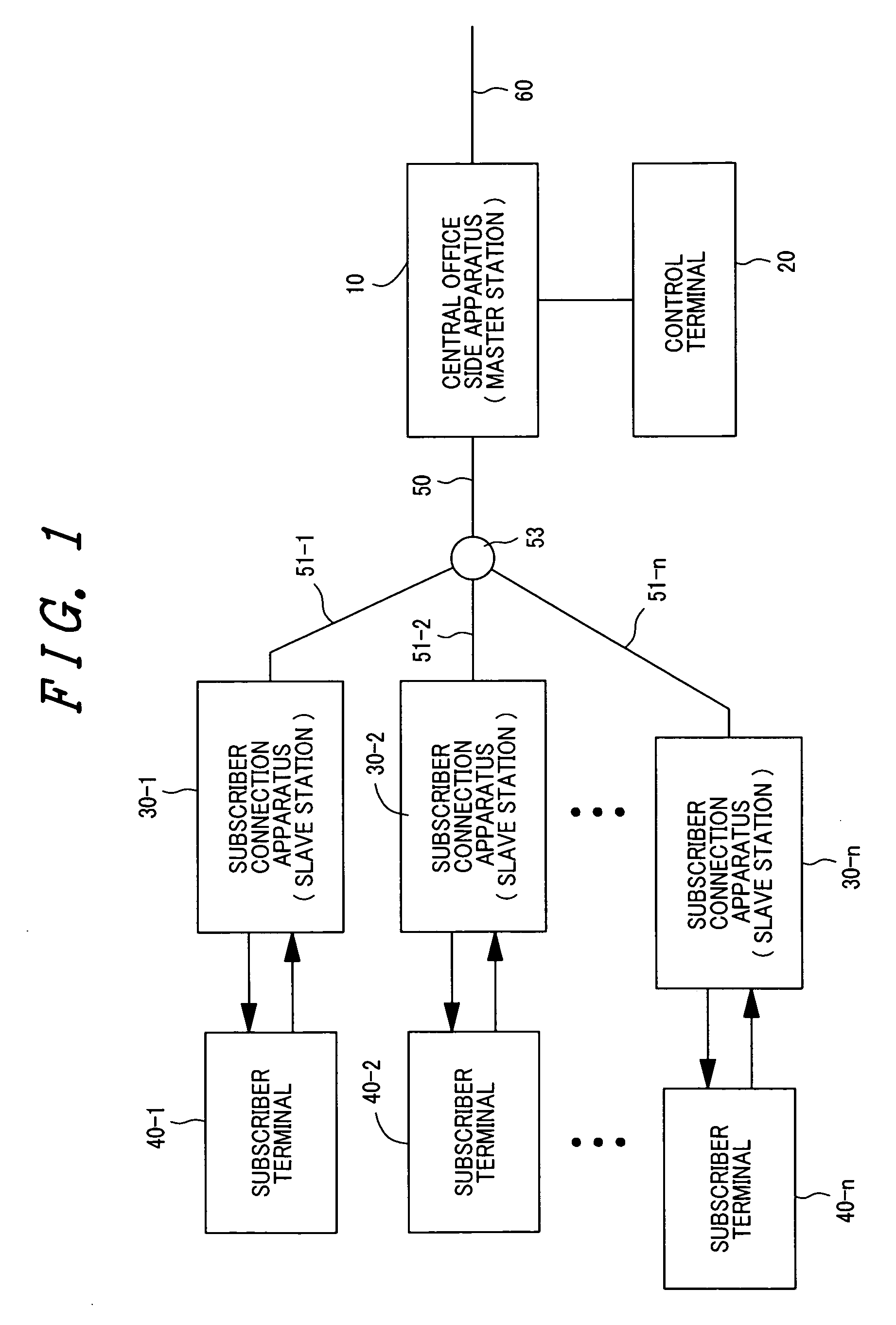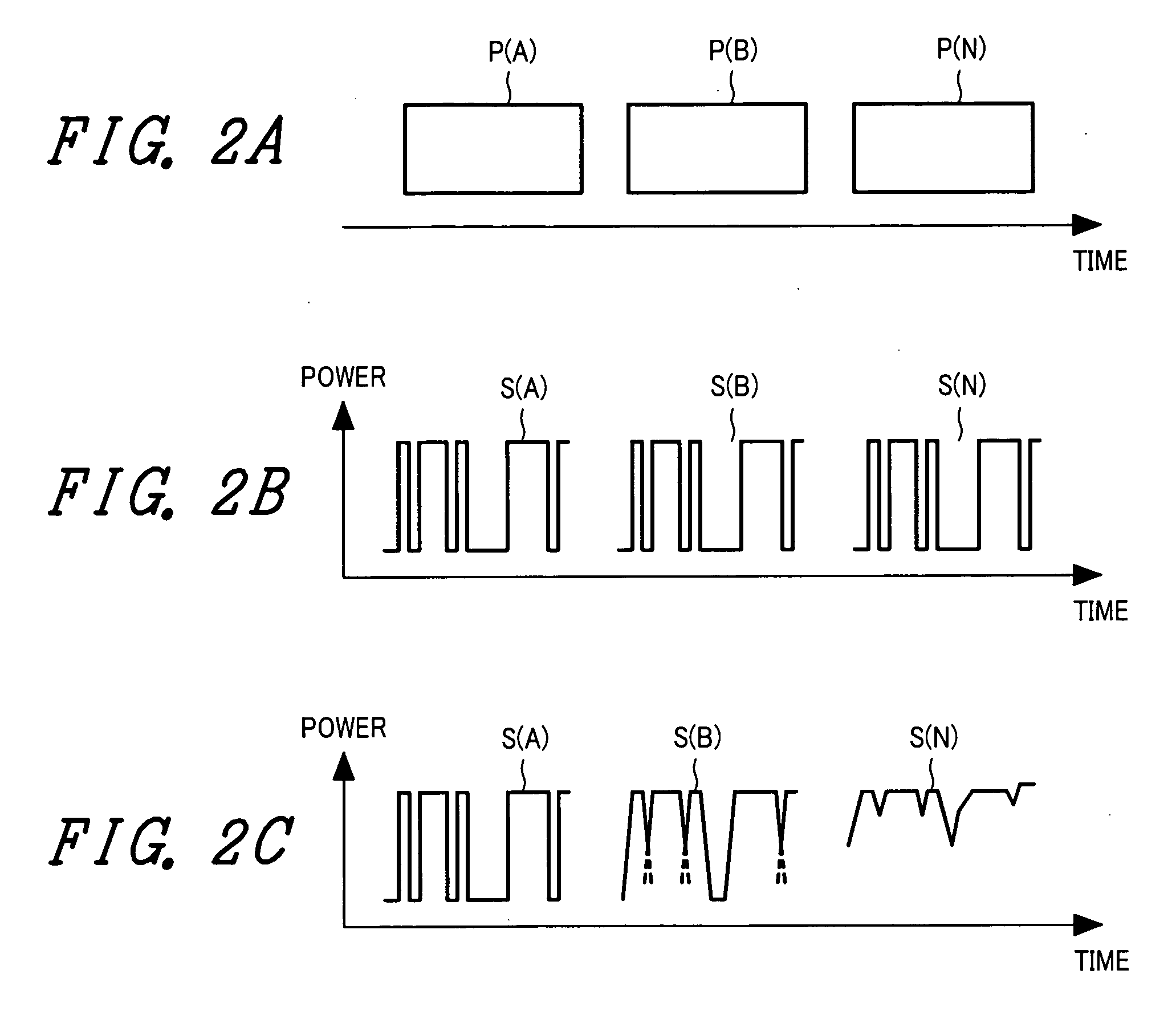Optical access network system
a network system and optical access technology, applied in the field of optical access network systems, can solve the problems of optical signal waveform distortion, waveform distortion, signal waveform deterioration, etc., and achieve the effect of correcting waveform distortion
- Summary
- Abstract
- Description
- Claims
- Application Information
AI Technical Summary
Benefits of technology
Problems solved by technology
Method used
Image
Examples
first embodiment
[0086]FIG. 8 shows a control sequence of a first embodiment of switching the equalization characteristic.
[0087] For example, a slave station 30-1 that wants to transmit data issues a transmission request to the master station 10 (401) before transmitting actual data. The data transmission request is received by the upstream frame terminating unit 113 and transferred to the main controller 100 in the master station 10. The main controller 100 determines a transmission grant period, during which no collision with upstream packets from the other slave station will occur, by referring to the timing management table 105 and taking account of a delay time of transmission signal from the slave station 30-1 specified in the delay time table 104, and assigns that period to the requester slave station 30-1 (402). Although the transmission grant period is assumed to be specified as a transmission start time T1s and a transmission end time T1e in the description herein, it may be designated as...
second embodiment
[0097]FIG. 10 shows a control sequence of a second embodiment of equalization characteristic switchover.
[0098] A feature of the second embodiment resides in that the equalizer controller 130 searches the parameter table 140 for a set of parameters (tap gain values) for the next slave station after the equalizer controller 130 fetches the converged values of the tap gains from the parameter register 80 provided in the tap gain controller 71A (71B) of the equalizer 112 and stores these values into the parameter table 140 (408), and sets the retrieved parameters to the parameter register 80 (410). In this case, an internal control delay time td, which will be elapsed until new parameters (tap gain values) for the parameter register 80 are set after the equalizer controller 130 receives a switchover request from the main controller 100, is longer than the corresponding delay time td for the first embodiment.
[0099] In the second embodiment, the main controller 100 calculates directive ...
third embodiment
[0104]FIG. 12 shows a control sequence of a third embodiment of switching the equalization characteristic.
[0105] A feature of the third embodiment resides in that the main control unit 100 issues a switchover request 405 for switching the equalization characteristic to the equalizer controller 130 at once without calculating the directive timing T1C, after the main control unit 100 notifies the requester slave station of a transmission grant period, and the equalizer controller 130 determines the timing to set parameters to the parameter register 80. In this case, the main controller 100 designates information required for the equalizer controller 130 to determine the timing to set parameters by the switchover request 405.
[0106] In this embodiment, the switchover request 405 includes the transmission start time T1s assigned to the slave station by the master station and the transmission delay time tf1 of signals transmitted from the slave station in addition to the slave station I...
PUM
 Login to View More
Login to View More Abstract
Description
Claims
Application Information
 Login to View More
Login to View More - R&D
- Intellectual Property
- Life Sciences
- Materials
- Tech Scout
- Unparalleled Data Quality
- Higher Quality Content
- 60% Fewer Hallucinations
Browse by: Latest US Patents, China's latest patents, Technical Efficacy Thesaurus, Application Domain, Technology Topic, Popular Technical Reports.
© 2025 PatSnap. All rights reserved.Legal|Privacy policy|Modern Slavery Act Transparency Statement|Sitemap|About US| Contact US: help@patsnap.com



